How To Paint A Field In Acrylic
In this post, you lot volition learn fundamental tips for painting grass. The idea of this post is non to show you a strict, stride-past-step process. Instead, I want to have the fundamental ideas and theories and evidence you lot how they can be applied to painting grass. This is much the same format equally my earlier post on leaves.
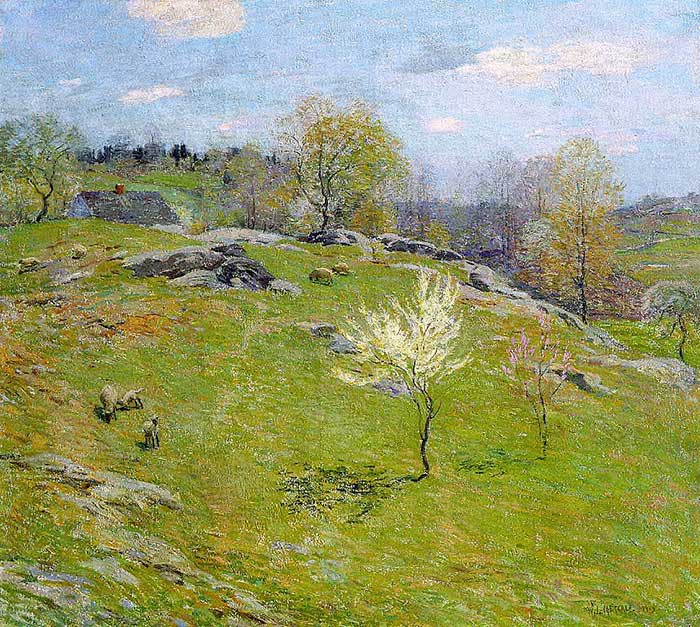
Willard Metcalf, Unfolding Buds
Identify the Bones Shapes
Grass tin can exist a challenge to paint because of all the data it provides (the strands of grass, colors, lines, shadows, highlights, etc.). Therefore, the outset step for painting grass is to simplify information technology down to the most bones and abstract shapes. This volition let you to "run across" more structure and form.
In the painting below, Konstantin Korovin painted the basic shapes of lite and dark and left it at that; he did not paint any of the finer details.
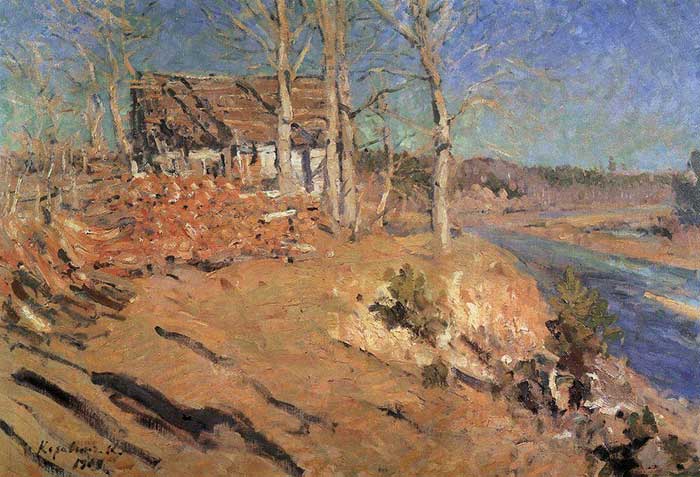
Konstantin Korovin, Autumn Landscape, 1909
I did a similar matter in my painting below. Grass, whilst an important part of the limerick, was not a key feature and therefore did not need to exist finely rendered. Instead, I spent more attention on the leaves at the top of the painting.

Dan Scott, Queenstown, New Zealand, 2019
In Willard Metcalf'sHillside Pastures, the shapes are much more complex due to all the different colors, rocks, and shadows. When the shapes are complex, information technology is important that you lot spend more than attention on them at the early stage of the painting before calculation more of the finer detail. Otherwise, it will be like decorating a cake before stacking the layers.

Willard Metcalf, Hillside Pastures
In one case you have established the basic shapes, then you have the option to move on to other rendering techniques which are discussed below. Simply, you could exit the grass every bit basic shapes, like in the before paintings by Korovin and myself.
Apply Directional Brushwork to Capture Move and Form
A simple simply effective technique is to utilise directional brushwork which matches the form and movement of the grass. For example, if the grass is pointing upwards, so employ upwards brushwork. If in that location is a strong wind blowing the grass to the left, then work your brush to the left in the same mode.
Vincent van Gogh took this to the extreme in his painting beneath, with strong, vertical brushwork to describe the grass on a seemingly calm 24-hour interval. This also creates a strong stylistic effect, typical of van Gogh's work.
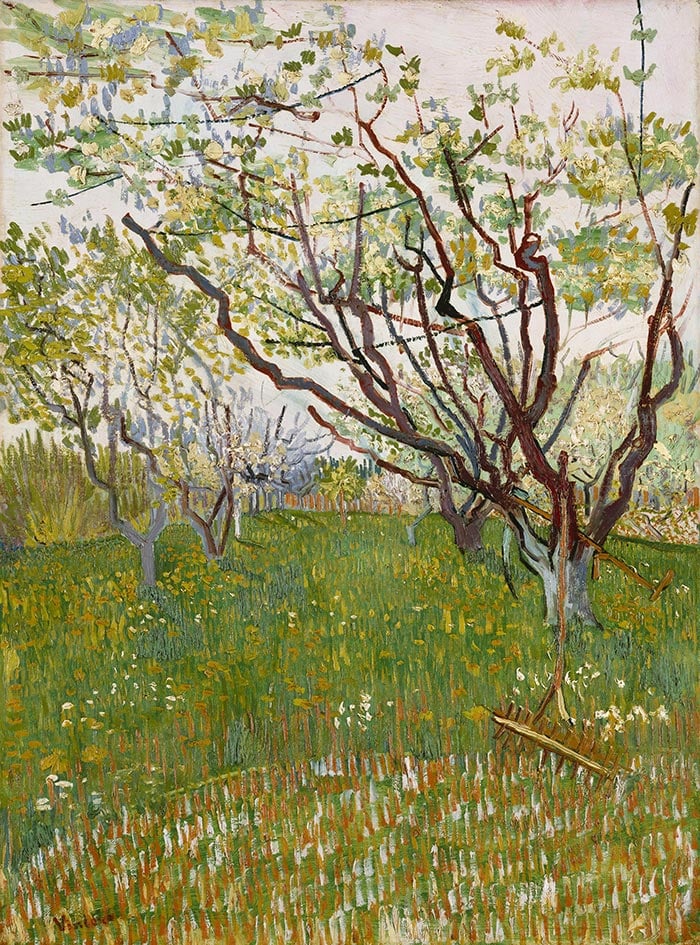
Vincent van Gogh, Mr. and Mrs. Henry, Ittleson Jr. Fund, 1956
InReflections of Jump , Peter Monsted took a more subtle approach with directional brushwork. If you expect at the bottom of the painting, notice the vertical brushwork used. And so it flattens out in the distance, giving a sense of perspective in the painting.
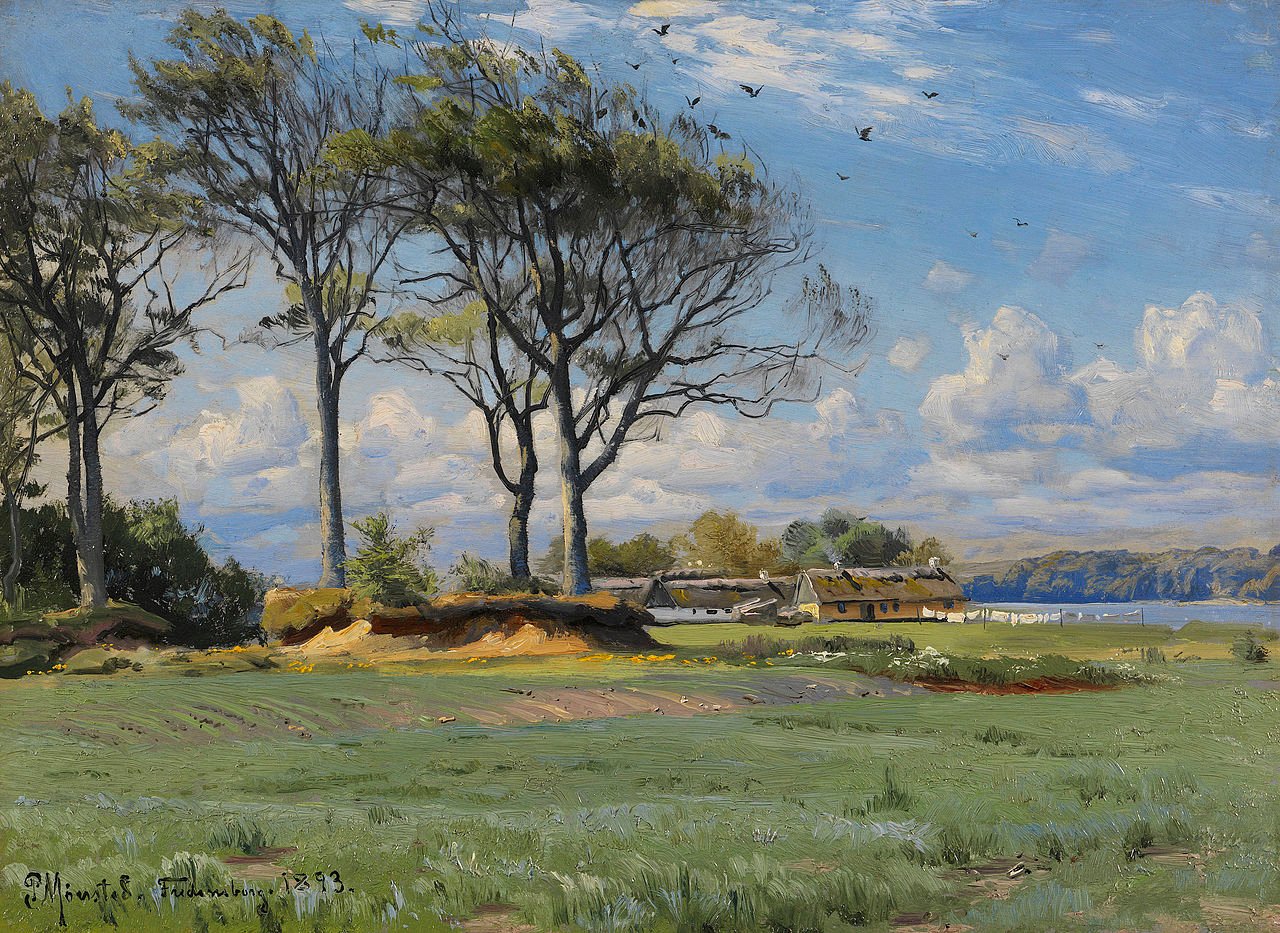
Peter Mork Monsted, Reflections of Spring
Place Of import Areas and Simplify the Rest
When painting grass, you don't demand to render every strand of grass. Information technology is far more than effective to place and focus on just a few important areas and simplify the rest.
For case, in Ivan Shishkin'south painting below, he used remarkable detail for the foreground area, just relatively simple item for the grass in the groundwork.

Ivan Shishkin, Earlier the Tempest, 1884
Below is a watercolor by Shishkin. Most of the realism in the grass can be attributed to those few highlights and nighttime accents; the remainder is simply thin washes of color.
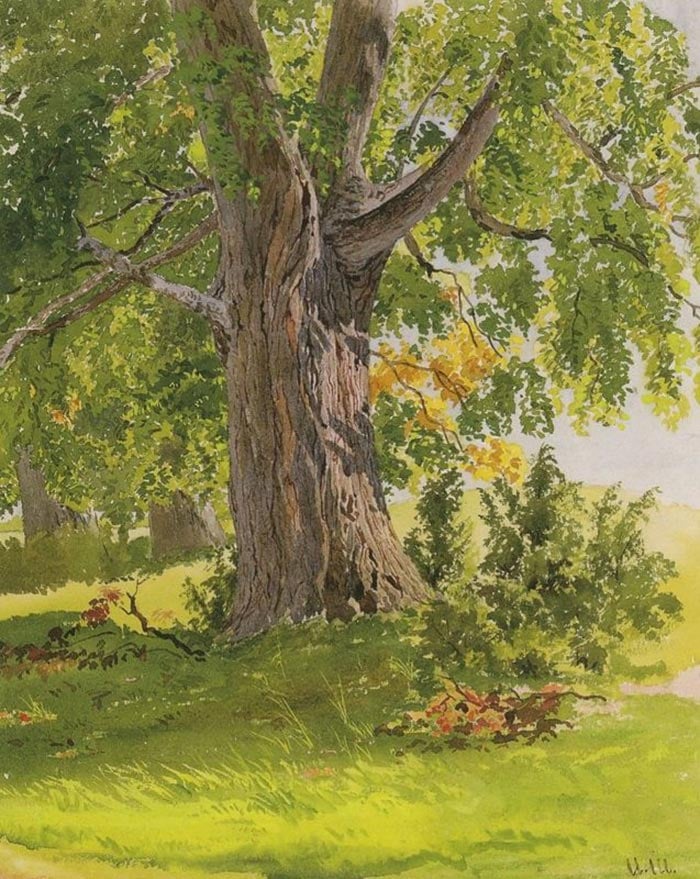
Ivan Shishkin, Oak, Lit by the Sunday
Tip: When deciding what to paint with detail and what to simplify, consider thefew areas which convey themajority of data. Areas like central shadows or highlights, difficult edges, vivid colors, or dark accents.
Accept Reward of the Stained Sheet or Underpainting
I often start a painting past staining the canvas with a dull, earth tone (raw umber, burnt sienna or yellow ochre). 1 of the benefits of doing this is it gives me the option to leave parts of the stained canvas exposed in the finished painting. This is particularly useful for painting grass, equally the exposed world tone mimics dirt, rocks, plants, etc. Richard Schmid is a remarkable artist who does this in many of his mural paintings.
Use Broken Color to Paint the Illusion of Numbers
Broken color allows y'all to easily paint the illusion of numbers without having to delicately return every strand of grass. Claude Monet was a chief of this technique. In paintings like the one beneath, he used small strokes of distinct color which expect like grass, rocks, plants, etc. from afar.
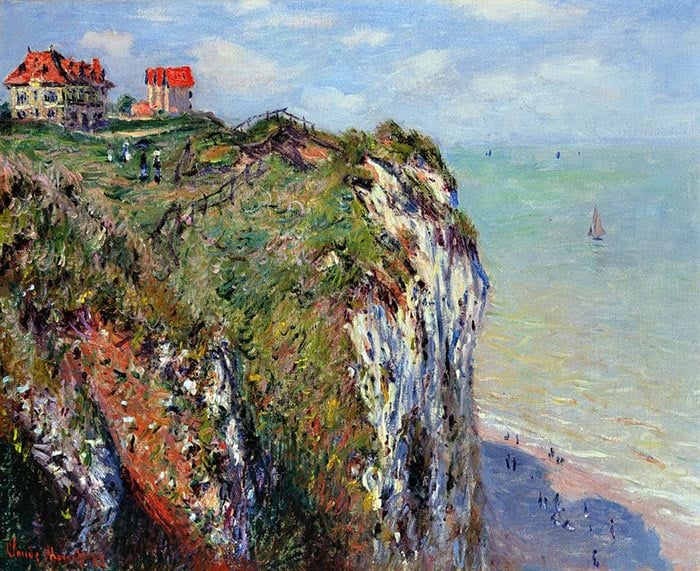
Claude Monet, Rock in Dieppe, 1882
Below is another example by Monet. Notice all the dissimilar greens, yellows and reds which make upwards the grass.
Tip: Broken color does non mean you lot need to use many different hues. Yous could use just a limited hue range but vary the saturation and value. In Monet's painting below, nearly of the broken colour is made up different green tones (light, night, and dull greens).

Claude Monet, Haystacks, Overcast Mean solar day, 1884
(If yous want to learn more than nigh color, brand sure to grab my complimentary Colour Theory Crook Sail).
Take Advantage of the Physical Texture of Your Paint
Yous can employ the physical texture of your pigment to mimic the texture of the grass you are painting. In Frederick McCubbin'sThe Edge of The Woods, he built up thick, textured paint to depict the rough foreground. The cease event is rather stunning.
How To Paint A Field In Acrylic,
Source: https://drawpaintacademy.com/grass/
Posted by: kingerybaceaven.blogspot.com


0 Response to "How To Paint A Field In Acrylic"
Post a Comment